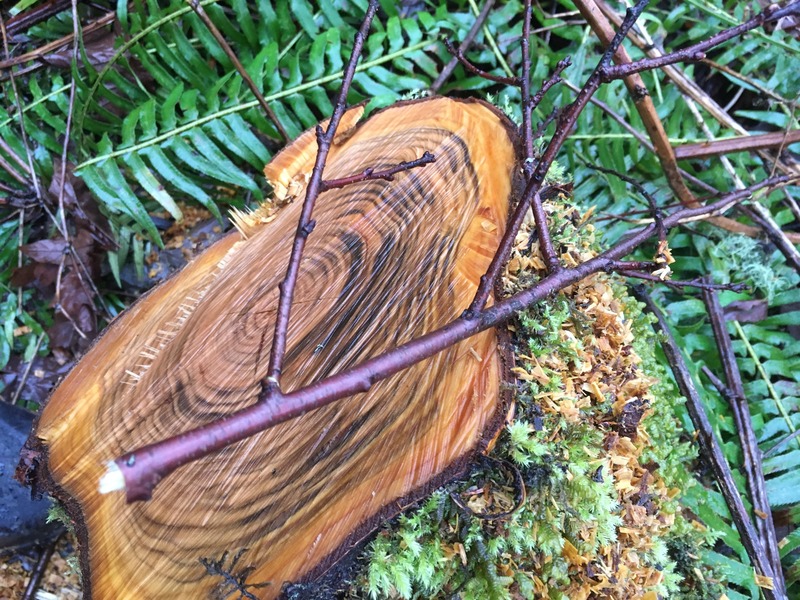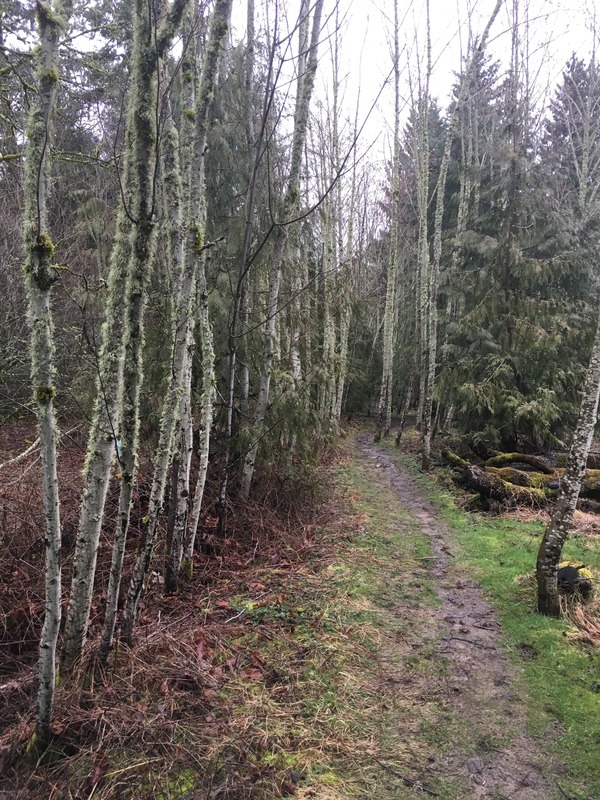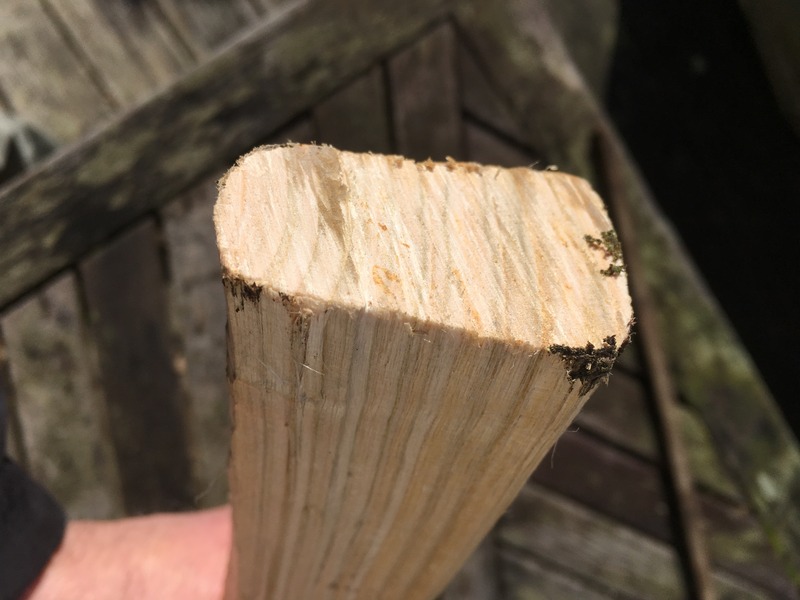You are using an out of date browser. It may not display this or other websites correctly.
You should upgrade or use an alternative browser.
You should upgrade or use an alternative browser.
Raw wood to handle
- Thread starter Agent_H
- Start date
- Joined
- Jan 5, 2016
- Messages
- 127
I hate to enlist you guys to ID wood but would closer pics help?
Also, I'm ok if it isn't handle worthy - thought it was fortuitous to be right here.
I studied a fair bit of botany and spent a few summers in provincial parks doing vegetation inventories when I was young(er) -- I rather enjoy dusting off the old skills and seeing what I still remember.
More pics always help. Close ups are good but whole tree shots can sometimes be really useful too since general form can be distinctive for some species.
- Joined
- Feb 1, 2012
- Messages
- 13,727
You posted a good enough picture before in the other thread. Perhaps some of these other gentlemen missed it.


That's clearly cherry.
I posted a picture from the web of wild cherry. This is the kind of thing I see here in the NW, though I didn't personally take this photo.

I'm confident that you have a variety of wild cherry there. Maybe choke cherry or bitter cherry. But it's a cherry.


That's clearly cherry.
I posted a picture from the web of wild cherry. This is the kind of thing I see here in the NW, though I didn't personally take this photo.

I'm confident that you have a variety of wild cherry there. Maybe choke cherry or bitter cherry. But it's a cherry.
- Joined
- Feb 1, 2012
- Messages
- 13,727
Leaf and flower pictures later in the Spring will confirm exactly what this is.
- Joined
- Aug 21, 2013
- Messages
- 3,898
I walked down there just now and only found two others that might be the same tree but the moss runs so high I can't say for sure. No leaves right now but as you are saying, spring is near.
Lots of alder, what I think is cotton wood and cedar. Lots of large ferns deeper in on the floor. None of it looks like the one I have.
Here is the new growth from the top sitting on the stump:


Walking in:

Lots of alder, what I think is cotton wood and cedar. Lots of large ferns deeper in on the floor. None of it looks like the one I have.
Here is the new growth from the top sitting on the stump:


Walking in:

Last edited:
Most of the cherry around here amounts to little more than saplings until a little north of me and I haven't liberated any of the bigger stuff. We do have water birch though and that is a fairly close match. But my experience with the water birch is it grows twisted and splits like a cork screw. I can't see the twist through that bark either. Must be Cherry. Burn a sliver.
- Joined
- Feb 21, 2015
- Messages
- 183
The colors in those stump pictures look amazing. It would make some great looking knife scales with the black streaks.
- Joined
- Feb 1, 2012
- Messages
- 13,727
Sweet birch is an east coast tree. Might be similar, I'm not familiar with it. But this bitter cherry is common here on the west coast. Trees can grow to 45 feet. When it leaves and flowers compare it to this.
http://nativeplantspnw.com/bitter-cherry-prunus-emarginata/
http://nativeplantspnw.com/bitter-cherry-prunus-emarginata/
- Joined
- Feb 1, 2012
- Messages
- 13,727
The colors in those stump pictures look amazing. It would make some great looking knife scales with the black streaks.
I've got some that's almost rainbow colored.
Sweet birch is an east coast tree. Might be similar, I'm not familiar with it. But this bitter cherry is common here on the west coast. Trees can grow to 45 feet. When it leaves and flowers compare it to this.
http://nativeplantspnw.com/bitter-cherry-prunus-emarginata/
We have that here but it grows on or below rocky talus slopes forming dense thickets maybe ten or twelve foot tall max. In central Idaho it turns into a real tree.
This is Water Birch https://en.m.wikipedia.org/wiki/Betula_occidentalis . Apparently it hybridizes with Paper Birch, and maybe others? I don't know. But that might be why you have not seen it. And that map for the range of Water Birch in that link I don't believe to be all that accurate.
Agent_H This looks to be similar to what is called Pin Cherry out this way. These never grow very big (8 inch diameter tops) nor are reliably knot-free-straight but they are bona fide hard fruitwoods, and should to be quite useful for tool handles. Commerce has always relied on large and/or common trees but that doesn't mean outliers and oddballs aren't worthy of consideration. Rock Elm, Hop Hornbeam and Blue Beech are 'orphans' in the north east lumber industry but have been actively searched out for hundreds of years by trades people that know exactly what they want. This 'standing tree-to-haft' experiment of yours is worthy of attention and hopefully bears fruit.
- Joined
- Aug 21, 2013
- Messages
- 3,898
I'm out here removing ends of the quarters a little past any visible cracks/stress splits.

Assuming it's some kind of Cherry,
Do I want to keep the heartwood and sapwood or just one or the other for attempting a handle?
What does a good stave look like before painting the ends and storing/curing?
It does smell good but it's competing with cedar :thumbup:

Assuming it's some kind of Cherry,
Do I want to keep the heartwood and sapwood or just one or the other for attempting a handle?
What does a good stave look like before painting the ends and storing/curing?
It does smell good but it's competing with cedar :thumbup:
Last edited:
- Joined
- Aug 21, 2013
- Messages
- 3,898
Don't be in a hurry! Air drying rule of thumb in the bone dry winter climate over this way is 1 inch thickness per year and seems to me where you are is much more humid, judging by the mosses and lichens decorating tree trunks in your outdoor shots.
Thanks for the tip 300six. It will be a good while before it is dry. I had several hours to work on stuff this weekend and was looking to get it as prepped as I can while it is still green. I also want to reclaim the space its taking up. Its all trimmed clean below any visible cracks and debarked.
I wouldn't let any sapwood into a handle with cherry, it's considerably softer. From what I've been told, the issue with sapwood inclusion is perhaps moreso that there is a tendency for a split to develop where the sapwood and heartwood meet.
Good to know, thank you Park Swan. I stripped a couple of the pieces down to the heartwood. I think the half round pieces and a couple of the larger quarters are my best bet if I am after heartwood only. Here is an example of a smaller piece stripped down.


Last edited:
- Joined
- Aug 21, 2013
- Messages
- 3,898
I stripped the quarters to the heartwood and ended up with a bit of usable wood.
Long to small, if it ends up being solid after fully drying, maybe hatchet, short hammer, and maybe 2-3# boys axe size handles. That is a 36" double bit handle for scale.
Is now when you would paint the ends for storage?

I broke the pear handle on my froe early into the processing. Ended up using this village parang, rubber mallet, and a drawknife. It may have been more work than just replacing the froe handle but at least its done.

Osage Outlaw, you mentioned it making interesting knife scales I have quite a few clean odds and ends of it that show the color difference if you want some. Or anyone else for that matter.
Any recommendations at this point? Not flying blind necessarily but it is the first time doing it from a log.
Long to small, if it ends up being solid after fully drying, maybe hatchet, short hammer, and maybe 2-3# boys axe size handles. That is a 36" double bit handle for scale.
Is now when you would paint the ends for storage?

I broke the pear handle on my froe early into the processing. Ended up using this village parang, rubber mallet, and a drawknife. It may have been more work than just replacing the froe handle but at least its done.

Osage Outlaw, you mentioned it making interesting knife scales I have quite a few clean odds and ends of it that show the color difference if you want some. Or anyone else for that matter.
Any recommendations at this point? Not flying blind necessarily but it is the first time doing it from a log.
Last edited:
rjdankert
Basic Member
- Joined
- Mar 10, 2011
- Messages
- 2,565
I suppose there is research on this, but fwiw one of my uncles who was a lifetime woodworker told me to coat the ends asap. And that included painting the log ends if not cutting right after felling. So, that's what I do.. . .
Is now when you would paint the ends for storage?. . .
Bob
